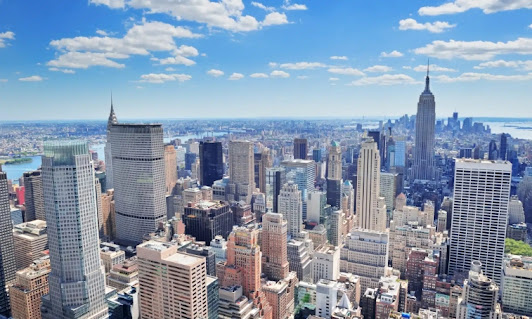Getting Local Law 97 Done
In the continuing saga of rolling out NYC’s Local Law 97, 2024 represents a milestone for the law originally passed in 2019. This will be the first year that fines will actually be assessed to building owners who fail to make “good faith” efforts to comply with the law and its guidelines.
The new law requires that all commercial buildings of 25,000 square feet or larger comply with stringent guidelines aimed at reducing greenhouse gas emissions, with a goal of a 40% cut in emissions from commercial buildings by 2030 and an 80% reduction by 2050. The law will cover close to 50,000 buildings across the city, according to the NYC Department of Buildings (DOB). Those buildings account for 60% of New York City’s building area and half of the city’s building emissions.
In September of 2023, Mayor Adams introduced the rules and guidelines for compliance, called “Getting 97 Done.” The guidelines were tightened up in a revised rules package released last month as a result of public hearings and feedback from a wide variety of stakeholders. “The new rules provide clarity with incentives to accelerate carbon savings” John Mandeck, CEO of the Urban Green Council said in a statement.
Building Owners are Concerned
Building owners are already required to have completed 3rd party engineering studies of their buildings that establish a carbon emissions baseline and propose upgrades that will bring these buildings into compliance. For a large building that is older, the cost of these upgrades can easily be into hundreds of thousands of dollars, or for some, over a million.
Usually included in these studies is a recommendation around installation or upgrade of a Heat-Timer® Platinum Series control with Internet and Wireless Space Sensor features (BuildingNet). But what many building owners don’t realize is that installation of a Heat-Timer® Control is typically one of the most inexpensive line items in the compliance roadmap, while having the single most significant effect on decarbonization and energy use.
In 2024, the new law will be enforced through both fines and incentives. “Through a combination of sticks and carrots, our rules create a carefully balanced approach which incentivizes owners to do the work required under the law,” Buildings Commissioner Jimmy Oddo said in a DOB press release. Some of the “good faith” elements that can fend off fines include various ways to respond to regulators.
- Proving that work to meet the emissions limits is underway.
- Demonstrating that the building is engaged in long-term decarbonization planning and will achieve near-term compliance with the 2024 and 2030 emissions limits.
- Purchasing RECs (Renewable Energy Credits) to deduct from GHG emissions, but this is only allowed up to a certain amount.
Heat-Timer® Controls Are Part of LL97 Implementation Plans
In many buildings, part of the planning or active work that demonstrates a “good faith” effort, is the installation of Heat-Timer internet controls with wireless space sensors. With the vast majority of NY buildings operating on some kind of boiler based heating system, Heat-Timer® controls represent an opportunity to demonstrate compliance as part of a more gradual process of update and conversion.

With the cost of boiler replacement and upgrades getting into six or even seven figures in some large buildings and housing complexes, the cost of an internet capable Heat-Timer Control with wireless space sensors is generally a tiny fraction of this. Not to mention that the installation of the control and sensors qualifies for a number of state and federal incentives, further reducing upfront investment. Given that it also roadmaps into any boiler upgrades a building operator may do in the future, the investment is forward-looking and can help ward off fines (and reduce heating bills) now. This coupled with the general ease of installation of Heat-Timer® internet based controls and wireless sensors, and their flexibility to operate with both steam and hot water heating, multiple boiler types in multiple configurations, etc… make the use of these controls an indispensable part of a LL97 mitigation plan.
As the number one recommended measure by LL97 engineers, coupled with having an ROI of less than 1 year in most cases, there is no other LL97 mitigation option that will go further toward reducing carbon emissions, dollar for dollar. Installation of a Heat-Timer internet control with wireless space sensors, or upgrading your existing Heat-Timer® Platinum Control is truly a “no-brainer” solution in the LL97 compliance equation.
For more information on Heat-Timer Controls and their use in buildings affected by LL97, please call our team today or visit our website at: https://www.heat-timer.com/
This blog was originally published at: https://www.heat-timer.com/getting-local-law-97-done/




Comments
Post a Comment